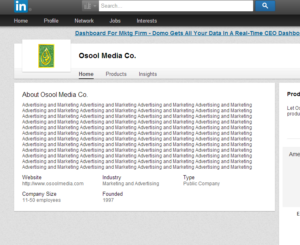 We’ve all heard “SEO is Dead” from alarmists, the uninformed, and in countless link bait articles (irony?). But is there any truth to it?
We’ve all heard “SEO is Dead” from alarmists, the uninformed, and in countless link bait articles (irony?). But is there any truth to it?
While Search Engine Optimization may look completely different than it did even a year ago, I firmly believe that SEO is not only alive, but thriving. Here’s why:
Some of SEO is Dead
Many tactics that have fallen under the SEO umbrella can safely be considered dead, either because they don’t work anymore, never worked, or still work but are in violation of Google’s guidelines. I’m not going to spend time discussing why they don’t work or are risky, because that’s not what this article is about, and there has been plenty written about the topic.
Just so we’re on the same page, here are some examples of basic SEO tactics that aren’t worth your time:
- Keyword stuffing and hiding
- Buying mass links, directory links
- Duplicating websites (or categories) on different domains
- Content spinning, automatic content
- Optimizing purely for “ranking” outcomes
What SEO is Today
SEO at its core is the art and science of making high quality content easier to find on search engines. The key point being ‘quality content’ that helps customers answer questions that lead to purchase or some other business outcome. Most of Google’s algorithm updates are intended to reward good content and punish spam. While it may not always feel like it, most of Google’s best practices for SEO are really on your side, you just need to learn and master them.
Here are some SEO tactics that are alive and well:
- Keywords that support customer targeting
- SEO copywriting and on-page optimization
- Link attraction
- Internal link optimization
- Technical SEO (anything designed to make your site more accessible to search engines)
- Optimizing for engagement and conversions
Quality Content is Good, Optimized Content is Best
If search engines are just trying to reward high quality content by making it more findable, isn’t it enough to just create great content and call it a day? Unfortunately, no.
While search engines are getting much smarter, more efficient, and overall better at ‘screening’ content, they still pale in comparison to people’s inherent ability to pick out the nuances and meaning of content. So it’s important to send the right signals to search engines and make those signals as easy to understand as possible.
Content quality comes down to relevance for customers and there’s no better way to target customer interests than through keywords. Every search begins with someone typing keywords into a search box, and ends with them clicking on one of the sites listed in the search results. If your site doesn’t include the keywords or closely related phrases on web pages, in meta-data, or inbound link anchor text, you’re not giving the search engines (or buyers) the information they need to understand your site’s relevance for that search query.
Optimization of on-page copy and meta elements can have positive effects on search traffic and rankings, in particular for sites that are strong in most other aspects. For example, I have been working with a client in the software industry who has a well designed site that is technically sound, has useful and compelling content, and a strong back-link profile.
However, competitor keyword research and customer targeting analysis indicated that the keywords which are most relevant to their audience related to consideration and purchase stages of the buying cycle weren’t being effectively targeted (i.e. they didn’t appear enough or at all in on page copy, meta elements, or cross-linking).
Within 3 months of implementation of basic on-page content optimization, we achieved a 320% increase in organic search traffic, a 15% decrease in average bounce rate and page one rankings in the major search engines for nearly all of our identified target keywords. Better visibility for what customers are actually looking for leads to more traffic and sales.
Links Still Matter
While Google’s recent announcement about the decreased importance of links is significant, it is far too soon to write off quality links altogether. Crawling links is an important way for search engines to discover content, thus the more links pointing to your site (from relevant, quality sources), the more opportunities the search engines have to find your content.
Don’t fall into the trap of treating links as more important than quality content, or that enough links pointing towards bad content can somehow make it good. This is the definition of misguided effort, as great content will not only attract quality links on its own (with help from effective promotion and social media shares), but is far more likely to increase visitor engagement when it’s found, and result in those all-important conversions.
Social shares are as important as links from other web pages, so ensure your content creation efforts include content promotion efforts through social networks. Grow networks on a regular basis to increase the audience reach of the optimized content you’re promoting too. Google+, Facebook and Twitter are must-haves with any content promotion efforts through social media. Just make sure you’re promoting plenty of other useful content, not just your own.
Increasingly, it has become important to not only acquire quality links, but to monitor and potentially remove low quality links, especially if you have received an unnatural link warning from Google. Regular monitoring and auditing of your site’s link profile is a good preventative measure, as bad links often have a cumulative effect, and can be very difficult to clean up once they become a clear problem.
Recently, a preliminary audit of a new client’s site indicated the prevalence of several nasty kinds of links, including paid site-wide links, and several thousand links from blog networks and link farms. Given the severity of the problem, we prioritized an extensive inbound link audit and disavowal initiative to ensure the quality content being published would not be negatively affected by previous SEO link building efforts.
Technical Problems can Prevent Search Engines (and People) from Finding and Engaging with Your Content
As fast as things change in SEO, the chances that search engine algorithms will start to penalize sites for functioning well from a technical standpoint are slim, and humans are no different. How many times have you wished a site would load slower?
The importance of optimizing your site so that your pages load fast, your content is easily accessible and your navigation is intuitive cannot be understated. People will leave a site and never return if they get confused or have to wait too long, and search engines will too.
This is one area in particular to keep a close eye on, as small technical issues can have wide-spread and severe effects on your site’s search engine friendliness. Many companies with large sites that employ digital marketing agencies with strong SEO skills, receive their value many times over just from ongoing technical optimization.
For example, un-intentionally blocking pages or a whole site from being indexed in search engines via robots.txt is not only an SEO killer but very easy to do. Often development teams will temporarily block parts of a site when making updates, and unfortunately neglect to restore the robots.txt file following the updates.
As site updates can often introduce indexation as well as other technical website problems, it’s a good idea to include a step for an external team to check for any problems following a major update, as well as on an ongoing basis.
Modern SEO is Alive and Well
By definition, SEO is about an ongoing effort to improve the performance of your website content to be found both by search engines and customers using search engines. What better time is there for your useful content to be found than at the exact moment your customers need it? That’s the value search engine optimization brings to the online marketing mix. As long as people use search engines to find information and businesses have content they want potential customers to see, SEO will be important. I don’t see that changing anytime soon.
How are you using SEO in your company to attract, engage and convert more customers?
Image source: Shutterstock



